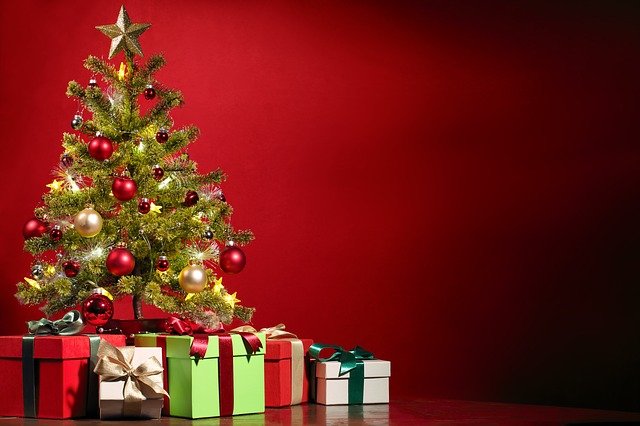By Tim Lambert
Early Christmas
Why do we celebrate Christmas on 25 December? The Bible doesn’t say which day of the year Jesus was born on. But early in the 3rd century, Christians like Hippolytus (c.170-235) and Clement of Alexandria (c. 150- c.215) died on 25 March. They also thought that he must have been conceived on 25 March because they thought the day of his death would reflect the day of his conception. So if he was conceived on 25 March he must have been born 9 months later on 25 December. Christians gradually accepted 25 December as the date of Christmas.
In England, Christmas was originally called Yule. The old Saxon word Yule meant mid-winter. However when the Anglo-Saxons were converted to Christianity the word Yule came to mean Jesus’ birthday. The word Christmas (Christ mass) was not used until the 11th century.
Christmas was just one of many festivals celebrated throughout the year. Until the 19th century, Christmas was not particularly important in England.
In the 18th century and 19th centuries, it was common to burn a Yule log in the fireplace at Christmas. (Burning a Yule log was first recorded in 1725). In the 19th century, it was common to burn a Yule candle at Christmas.
Boxing Day was originally a day when alms-boxes in churches were opened and the money was distributed to the poor. Later ‘boxes’ were given to servants.
Christmas carols were first mentioned in English in 1426 by a clergyman called John Audelay. But most of the carols we sing today were written in the 18th century and 19th centuries. The first carol service was created in 1880 by the Bishop of Truro, Edward White Benson. He wrote a service called the Nine Lessons with Carols.
Modern Christmas
Our modern Christmas began in the 19th century. Most of the things that make up a ‘traditional’ English Christmas were invented (or imported into England from other countries) in the 19th century. That includes Christmas trees, Christmas cards, Christmas crackers, paper decorations, and, of course, Father Christmas or Santa Claus with his white beard and red costume.
Long before the 19th century people in England decorated their houses at Christmas with holly, ivy, and mistletoe. In the 19th century, people began to use colored paper decorations. The custom of kissing under the mistletoe was first recorded in 1784.
For centuries it was common to give Christmas gifts to friends and relatives at Christmas. However, hanging out stockings to be filled with presents was first recorded in parts of England in the early 19th century. It became common in the late 19th century.
Christmas cards were invented in the 19th century. The first one was designed in 1843 by John Horsley. By the 1860s Christmas cards were very popular in England. A man named Louis Prang is sometimes called ‘The Father of the American Christmas Card’. He started selling them in the USA in the 1870s. They were a big commercial success.
Christmas crackers were invented in 1847 by a confectioner named Tom Smith. While in Paris he saw sugar almonds sold wrapped in tissue paper and he invented the Christmas cracker. He added mottoes to the sweets (later these evolved into jokes). Smith added the ‘bang’ in 1860. Little gifts were also added to Christmas crackers.
Christmas trees were first recorded in Europe in the 15th century. Tinsel was invented in the early 17th century. The first Christmas trees in England appeared in England in the early 19th century but they did not become popular till Queen Victoria married a German, Prince Albert. In 1848 they were shown in a picture in the Illustrated London News with a Christmas tree. As a result, Christmas trees became very popular. Electric Christmas tree lights were invented in 1882 by Edward H. Johnson.
Santa Claus
Father Christmas and Santa Claus were originally two different figures. In England, Father Christmas was a man dressed in green (representing the return of Spring) who was supposed to visit families and feast with them at Christmas. (He did not bring gifts).
However in the 19th century in England, Father Christmas merged with the Dutch Santa Claus. He is supposed to be based on St Nicholas a Christian bishop who lived in Turkey in the 4th century AD. According to tradition, St Nicholas gave generous gifts to the poor. St Nicholas had a feast day on 6 December. (In Poland Santa still brings gifts on 6 December). On that day it was traditional to give gifts or to give to charity to remember the saint’s generosity.
The Dutch took the tradition of ‘Sinterklaas’ to America. In time Santa Claus evolved into a figure who brings gifts to sleeping children at Christmas. The modern Santa Claus or Father Christmas was invented in 1862 by a German-American artist called Thomas Nast. In the late 1860s, Santa Claus was imported into England.
Mince pies have been eaten at Christmas in England since the 16th century. Originally they were made of minced meat but in the 19th century, the meat was replaced with dried fruit and spices.
Originally people ate a cake on Twelfth Night (6 January). In the late 19th century people began to eat the traditional Twelfth Night cake at Christmas. So a Victorian Christmas contained all the elements of a traditional Christmas such as Santa Claus, Christmas trees, Christmas crackers, Christmas Cards, Christmas cake, and pudding.
The first printed Advent calendar was made in 1903. Rudolph the Red-Nosed Reindeer was created in 1939 by Robert L. May.
Today Christmas is still celebrated on 7 January in Ethiopia. The Russian Orthodox Church also celebrates Christmas on 7 January.

Last revised 2024